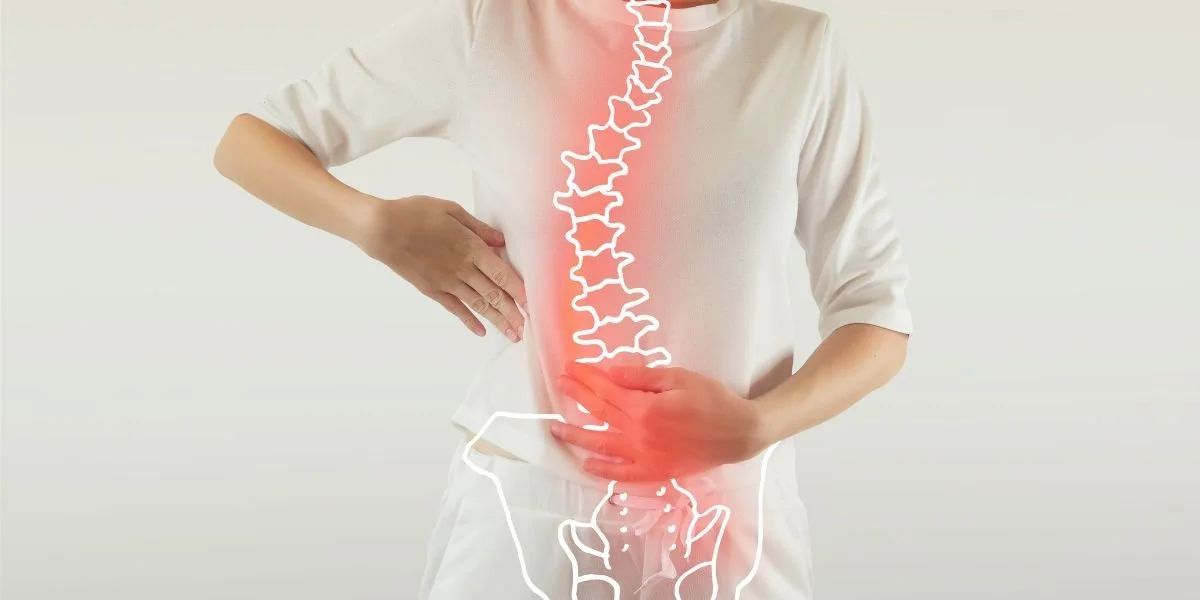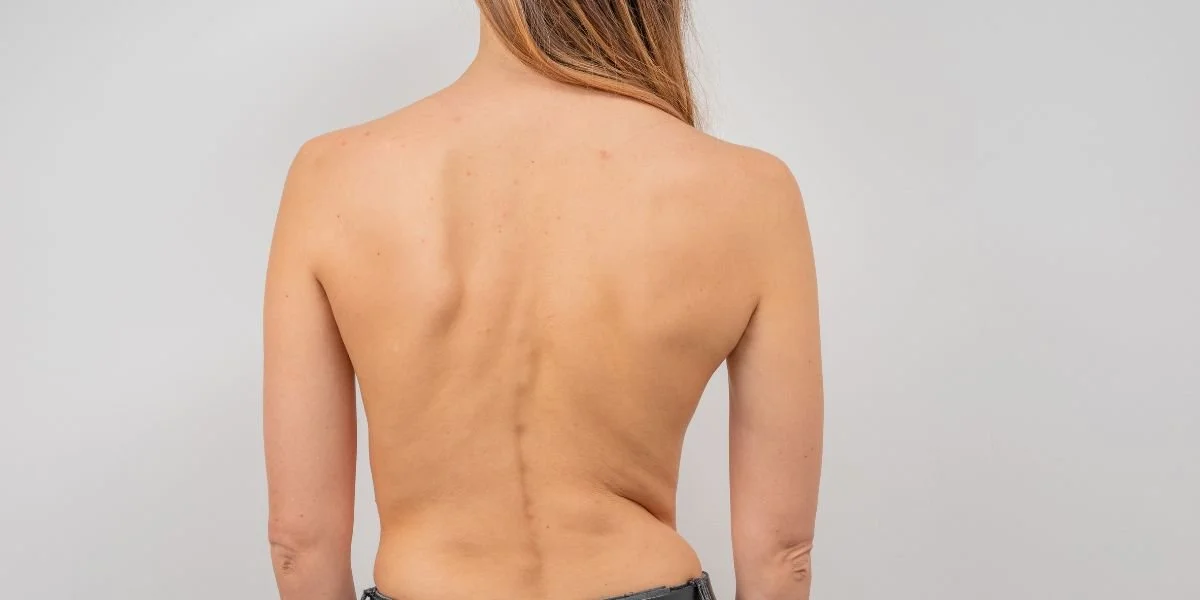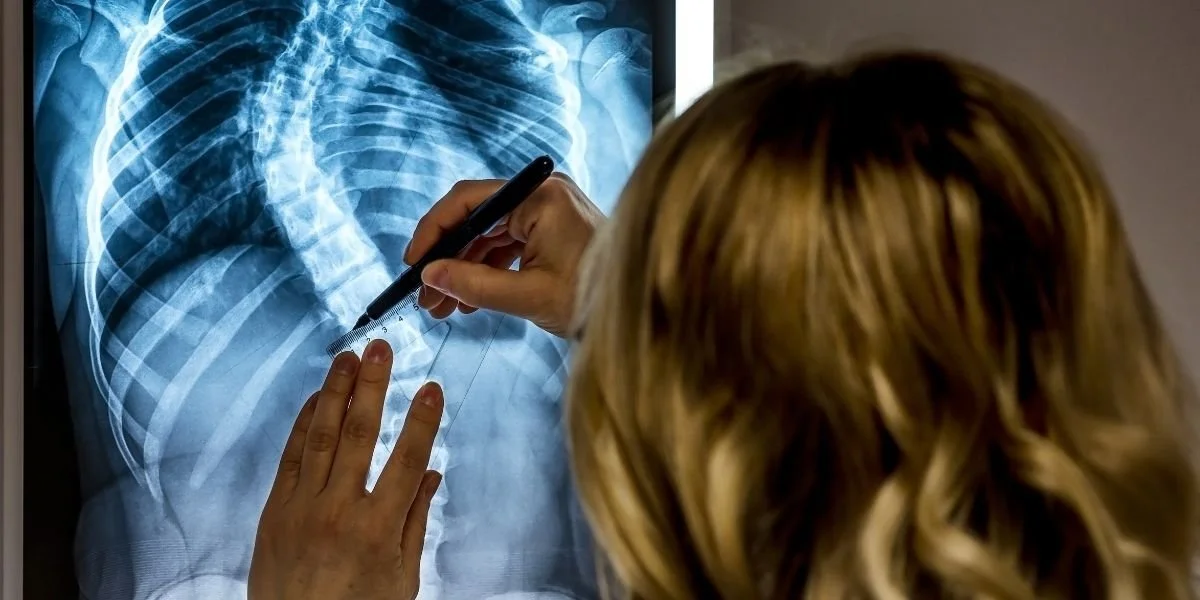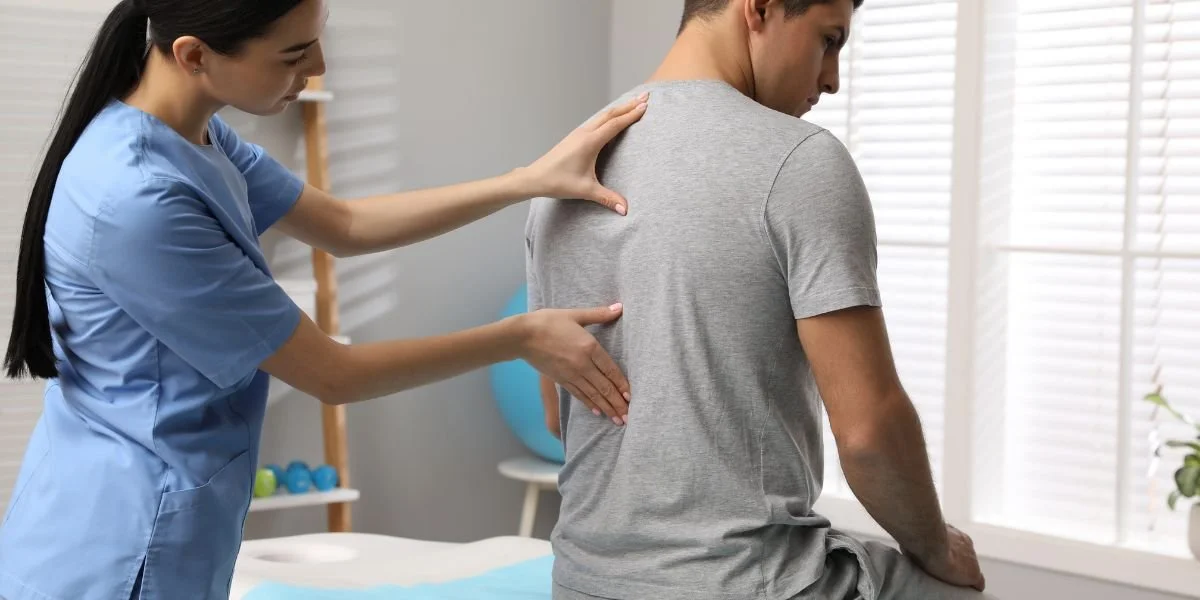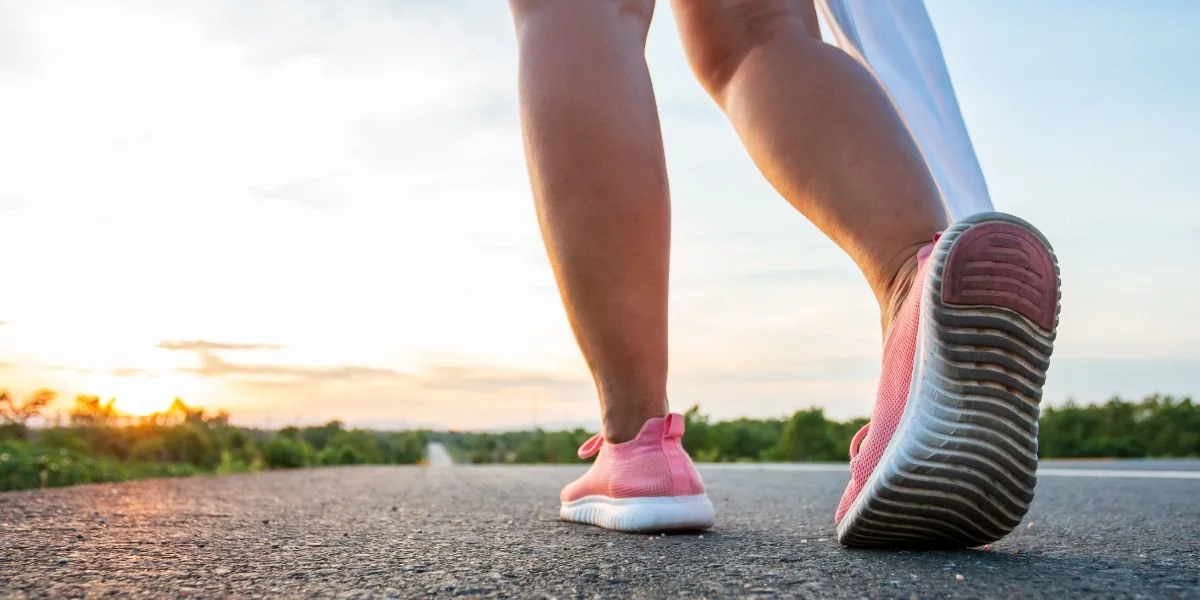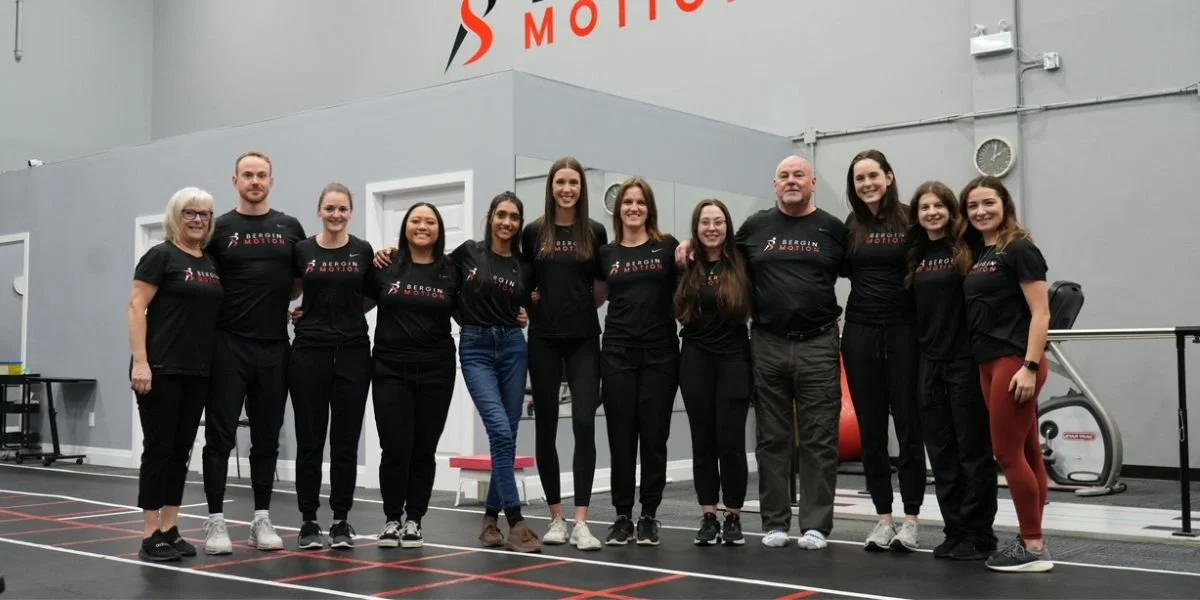What is Scoliosis: Symptoms, Causes, Treatment Options
Scoliosis is a sideways curvature of the spine, forming an ‘S’ or ‘C’ shape. It can happen at any age but often appears during adolescence. In this article we will cover the symptoms, types, causes and treatment options for scoliosis, so what is scoliosis?
Quick Facts
Scoliosis is an abnormal lateral curvature of the spine, diagnosed during adolescence, with multiple types including idiopathic, congenital, neuromuscular and degenerative scoliosis, each requires different treatment approach.
Early detection through regular checkups and school screenings is key to managing scoliosis as it allows for timely intervention to stop the curve from getting worse.
Treatment options for scoliosis range from observation and bracing to physiotherapy and surgical treatments depending on the severity of the curve, age of the patient and risk of progression.
What is Scoliosis
Scoliosis is an abnormal lateral curvature of the spine, looking like an ‘S’ or ‘C’ shape, also known as scoliosis curves. It’s most common during adolescence but can happen at any age. It affects up to 3% of the population, more in children and adolescents than in adults.
Understanding the different types of scoliosis helps in accurate diagnosis.
Types of Scoliosis
Scoliosis can be classified into several types, each with its own causes and characteristics.
Idiopathic scoliosis: the most common type, accounts for 80% of pediatric cases
Congenital scoliosis: due to vertebral anomalies present at birth
Neuromuscular scoliosis: associated with conditions like cerebral palsy and muscular dystrophy
Neuromuscular scoliosis affects the thoracic spine and can cause significant curvature of the spine and requires full management.
Degenerative scoliosis affects older adults due to asymmetric disc degeneration over time. Each type of scoliosis has its own challenges and requires a different treatment approach. For example, due to the structural anomalies, congenital scoliosis requires early intervention, while degenerative scoliosis management is centered on symptom relief for older adults.
Idiopathic Scoliosis
Idiopathic scoliosis, the most common type, has no known cause and is diagnosed during adolescence. Idiopathic scoliosis often involves spinal rotation which can complicate the curve and affect overall spinal alignment. It can occur at different stages: infantile (0-3 years), juvenile (4-10 years) and adolescent scoliosis (11-18 years). Early onset scoliosis is when the condition develops before 10 years old. Mild cases are often asymptomatic and go unnoticed but regular observation is important to stop the curve from getting worse as the child grows.
Despite its unknown cause, idiopathic scoliosis accounts for most of the scoliosis cases, 90% of which don’t require bracing or surgery. Early detection and regular observation are the key to managing this condition.
Congenital Scoliosis
Congenital scoliosis is a rare type of spinal deformity due to vertebral anomalies present at birth, affecting 1 in 10,000 newborns. These anomalies cause a curvature of the spine that can be detected in early infancy or later in childhood.
Early diagnosis and intervention are the key to managing this condition and preventing further complications.
Neuromuscular Scoliosis
Neuromuscular scoliosis is due to conditions that affect the muscles and nerves such as cerebral palsy and muscular dystrophy. This type of scoliosis often co-exists with other neuromuscular conditions and requires a holistic approach to manage scoliosis and the underlying neuromuscular condition and associated musculoskeletal and skin diseases.
Degenerative Scoliosis
Degenerative scoliosis affects adults 18 and above, due to wear and tear of the spine as one ages. Asymmetric disc degeneration is the main cause, resulting in a curvature of the spine that can cause significant pain and mobility issues in older adults.
Early diagnosis through standing X-rays is important to determine the degree of the curve and any degenerative changes.
Scoliosis Signs and Symptoms
Knowing the signs and symptoms of scoliosis is important for early diagnosis and intervention. A rib hump is another sign, more visible when the patient bends forward. Common indicators are uneven shoulders, rib prominence and visible curvature of the spine. These physical asymmetries will become more pronounced as the condition progresses so early detection through regular checkups and school screenings is important.
Early Detection
Early detection of scoliosis is often done during annual visits with pediatricians or through school screenings. Regular checkups are important to detect scoliosis before significant growth spurts that can worsen the curve.
Early diagnosis is key to early intervention to prevent the formation of larger curves as the child grows.
Severe Cases
Severe scoliosis can cause chronic back pain, visible physical changes and limited lung function due to reduced chest space. If left untreated severe scoliosis can progress rapidly and often requires surgical correction to prevent further complications.
Causes and Risk Factors
The exact cause of scoliosis is unknown but genetic and environmental factors are involved. The main causes of idiopathic scoliosis are family history and genetics. These factors are the main contributors to the condition. Scoliosis can also be caused by congenital malformations, injuries or infections of the spine.
Usually, it appears between 10-15 years old, this age range is the critical period to be observed.
Genetic Factors
Genetic predisposition plays a big role in the development of scoliosis, scoliosis often runs in families. One-third of adolescent idiopathic scoliosis have family history of the condition. Genetic mutations in genes like CHD7, PAX1 and LBX1 are linked to scoliosis, this is why genetic research is important to understand this condition.
Environmental Factors
Environmental factors like injuries or infections of the spine can also contribute to the development of scoliosis. Although less common, these factors emphasize the importance of spinal health and addressing any spinal injuries early to prevent scoliosis progression.
Associated Conditions
Some conditions like neurofibromatosis and Marfan syndrome increase the risk of scoliosis. Neurodevelopmental and neuromuscular conditions like cerebral palsy, spina bifida and muscular dystrophy can cause neuromuscular scoliosis and requires holistic approach to treatment that addresses scoliosis and the underlying condition.
Scoliosis Diagnosis
Scoliosis diagnosis is a combination of physical examination and imaging studies. Doctors look for asymmetries in the shoulders, hips and rib cage during physical exam, often using:
scoliometers
X-rays
MRI scans
CT scans
These tests will determine the degree and location of the spinal curvature especially in the lumbar spine.
Imaging studies like X-rays and MRI are used to assess the shape, direction and angle of the spinal curve.
Physical Exam
The Adam’s Forward Bend Test is a standard screening tool used during a physical exam to detect scoliosis. A scoliometer measures trunk rotation to determine if further radiological evaluation is needed.
These physical exams are important for early detection and management of scoliosis.
Imaging Studies
Imaging studies like X-rays, MRI and CT scans are used to diagnose scoliosis. The Cobb angle is the standard measurement used to quantify the degree of spinal curvature on X-rays. X-rays is the primary diagnostic tool; it provides detailed images of the spine to measure the curvature using the Cobb Method.
MRI and CT scans gives additional information of the spinal cord, spinal canal and surrounding structures to aid in comprehensive diagnosis of a spinal cord injury.
Screening Programs
School screening programs is important in early detection of scoliosis, often using the Adam’s Forward Bend Test. Supported by Scoliosis Research Society, these programs emphasize early detection and intervention.
But routine screening of asymptomatic adolescents is still debated.
Scoliosis Treatment
Treatment for scoliosis varies depending on the degree of the curve and the patient’s age. The options are:
Observation
Bracing
Physiotherapy
Surgical treatment
The choice of treatment depends on the degree of the curve, patient’s age and risk of progression.
Observation
Observation is often the first approach for mild scoliosis, it involves regular checkups to monitor the curve’s progression. For congenital scoliosis, a “watch and wait” approach is taken, surgery is done only if the curve worsens and causes deformity or pain.
Bracing
Bracing is a common treatment for moderate to large spinal curves, to prevent further curvature. The most common type of brace is made of plastic and fits under the arms, around the rib cage, lower back and hips. Bracing is worn 13-16 hours a day and is discontinued once growth stops.
Physiotherapy
The treatment for scoliosis involves a combination of therapeutic exercises, education on biomechanics and in some cases, aquatic therapy. These are to improve posture and reduce pain associated with the condition. The Schroth Method is a series of personalized exercises to de-rotate, elongate and stabilize the spine.
Regular physiotherapy sessions are important to prevent scoliosis progression and manage symptoms.
Surgical Treatments
Surgical treatment is done for severe scoliosis when conservative management fails to improve the patient’s quality of life. Vertebral body tethering is another surgical option that uses a flexible cord to correct the spinal curvature while allowing for growth. Spinal fusion surgery which uses bone grafts to stabilize the spine is a common surgical option.
New innovative techniques like Api Fix which is minimally invasive offers new options for scoliosis treatment.
Living with Scoliosis
Living with scoliosis requires a holistic approach, pain management, mental health support and lifestyle adjustments.
Ergonomic workstations, proper body mechanics and supportive seating can help maintain spinal health and reduce discomfort.
Pain Management
Pain management is an important part of living with scoliosis. Non-surgical options are:
NSAIDs which reduces inflammation and provides temporary relief
Massage therapy which can relieve muscle tension and improve circulation
Injection therapy such as corticosteroid injections which targets the affected area to provide longer pain relief
These combined with regular chiropractic adjustments can relieve pain for scoliosis patients.
Mental Health
The psychological impact of scoliosis can be huge, affects self-esteem and emotional well-being. Joining online communities or local support groups can provide understanding and encouragement to cope with the condition.
Getting emotional support from friends, family or professional counselors is important in managing the mental health aspect of scoliosis.
Lifestyle Adjustments
Lifestyle adjustments is important for scoliosis management. Practicing good posture during daily activities can reduce tension and pain, can distribute weight evenly across the spine. Having a healthy lifestyle, staying hydrated, manage stress and regular exercise is good for scoliosis management.
Invest in supportive pillows and mattresses to alleviate pressure points during sleep.
Preventing Scoliosis Progression
Preventing scoliosis progression requires a proactive approach, exercise, posture awareness and regular monitoring. Strengthening core muscles can stabilize the spine and prevent further curvature.
Exercises to realign the spine, rib cage, shoulders and pelvis is important to maintain normal posture.
Exercise and Posture
Exercise and good posture are important in scoliosis management. Core strengthening exercises like planks and bridges support spinal alignment and minimize progression.
Exercises like pelvic tilts, cat-camel and single leg balance are effective in improving spinal alignment and reducing scoliosis symptoms.
Regular Monitoring
Regular check-ups with healthcare providers are important for early detection of changes in spinal curvature. Children with scoliosis should be checked every 4-6 months to have timely intervention if the condition progresses.
Regular follow-ups allow for adjustments in treatment plan to manage scoliosis.
How Bergin Motion Can Help With Scoliosis
Scoliosis is a condition characterized by an abnormal lateral curvature of the spine. This can lead to a range of complications, including discomfort, pain, and even issues with posture and mobility. At Bergin Motion, located in Barrie, Ontario, we offer specialized physiotherapy services to help manage and treat scoliosis effectively.
Our Approach at Bergin Motion
At Bergin Motion, we understand the complexities of scoliosis and provide individualized care plans that address each patient's specific needs. Here’s how we can help:
1. Detailed Evaluation
Our team of experienced physiotherapists begins with a comprehensive assessment to determine the degree of spinal curvature and its impact on your daily life. This evaluation includes a physical examination and possibly imaging studies to get a clear picture of the spine's condition.
2. Personalized Treatment Plans
Once we have a detailed understanding of your condition, we develop a personalized treatment plan that may include:
Strengthening Exercises: To build core and back muscle strength, which helps support the spine.
Stretching Routines: To improve flexibility and alleviate stiffness.
Postural Training: To encourage proper alignment and reduce the risk of further curvature.
Manual Therapy: Techniques to relieve pain and enhance spinal mobility.
3. Continuous Monitoring and Support
Managing scoliosis is an ongoing process. Our physiotherapists provide continuous monitoring and adjustments to your treatment plan to ensure optimal outcomes. We also educate our patients on at-home exercises and lifestyle modifications that can help manage their condition effectively.
Why Choose Bergin Motion?
As a family-owned clinic located at 680 Bayview Drive Unit 8, Barrie, Ontario, L4N 9A6, Canada, Bergin Motion prides itself on delivering highly personalized and compassionate care. Our commitment to helping individuals achieve better health and improved quality of life sets us apart. Whether you’re experiencing mild or severe scoliosis, our expert team is here to support you every step of the way.
Take the first step towards managing your scoliosis by contacting Bergin Motion today. Let us help you achieve a healthier, more comfortable life.
Summary
Scoliosis treatment depends on the patient’s age, curve size and risk of progression. Early diagnosis during childhood or adolescence has more treatment options, observation, orthotic management and surgical correction. Most scoliosis cases seen by general practitioners is idiopathic, therefore a comprehensive patient history, physical examination and radiographs is important for initial evaluation.
With a specific treatment plan, scoliosis patients can live normal lives, manage symptoms and prevent further curvature.
FAQs
Q: What is the most common type of scoliosis?
A: Idiopathic scoliosis is the most common, 80% of all pediatric cases.
Q: How is scoliosis diagnosed?
A: Scoliosis is diagnosed through physical examination, imaging (X-rays) and screening programs.
Q: What are the treatment options for scoliosis?
A: Treatment options are observation, bracing, physiotherapy and surgical treatment depending on the severity of the curve and patient age.
Q: Can scoliosis be prevented?
A: While scoliosis cannot be totally prevented, regular monitoring, exercise and good posture can manage and minimize progression.
Q: What is the role of genetic predisposition in scoliosis?
A: Genetic predisposition plays a big role in scoliosis; scoliosis often runs in the family.
About the Author
Sybille Bergin PT is a certified physiotherapist and one of the owners of Bergin Motion. Bergin Motion is a family-run Barrie Physiotherapy Clinic located in Barrie’s Southend. Sybille has been providing in-home physiotherapy for over 30 years. She specializes in treating acquired brain injuries, stroke recovery, and other related ailments. Sybille is a certified NDT practitioner. Neuro Development Therapy is a specialized hands-on treatment technique that promotes mobility, balance, core strength, and gross motor skills in a playful, fun, and dynamic way. Sybille leads a team of dedicated professionals providing first-class therapy at Bergin Motion to Barrie Ontario and surrounding areas.
Bergin Motion
Is a family owned physiotherapy company built by the Bergin family. Our family has served as physiotherapists in the Barrie area for over 30 years, spanning two generations. We are passionate about this community and helping people achieve their highest potential. Book with us now!
